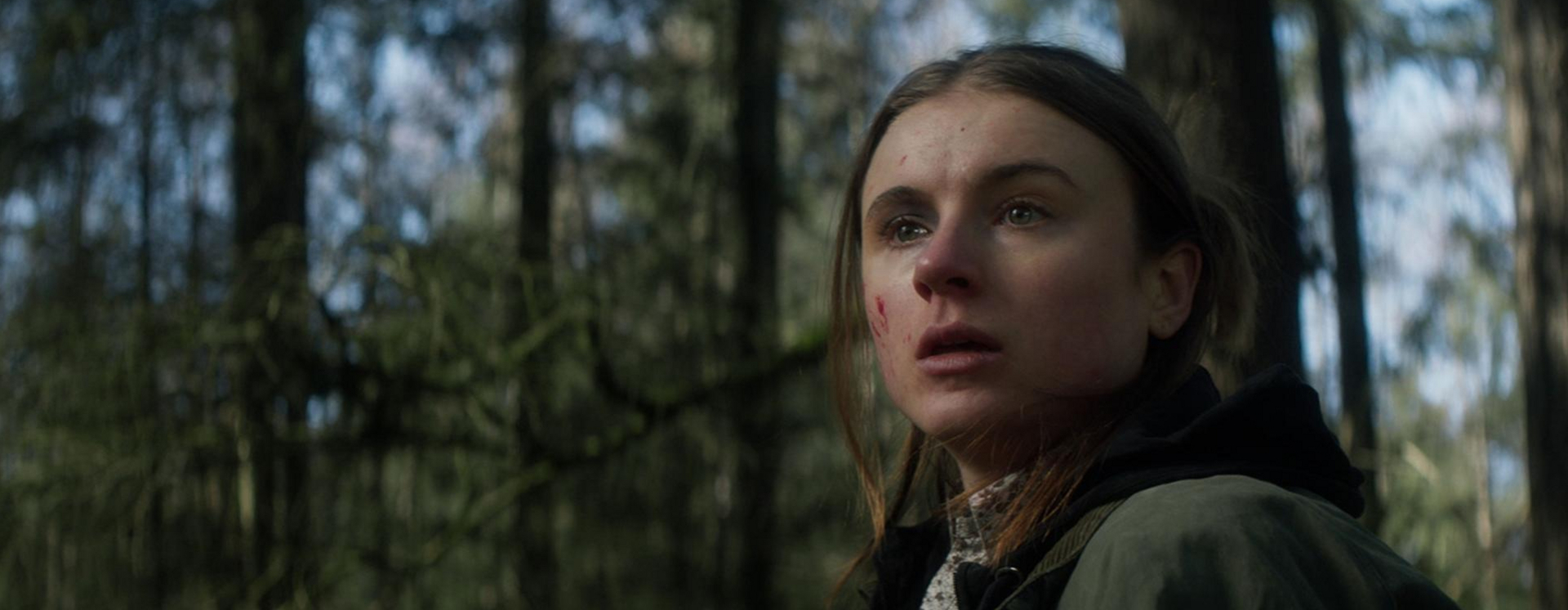Over een Pastoor op Regenlaarzen (About a Priest on Rain Boots)
Wessel van Wanrooij graduated from the degree programme Directing fiction at The Netherlands Film Academy with the absurdist story Over een Pastoor op Regenlaarzen (About a Priest on Rain Boots).
Over een Pastoor op Regenlaarzen is a short drama about Jozias who is suffering from dementia. He no longer wants to live, but that thought falls on deaf ears with his wife. When she dies one morning, Jozias embarks on a hike that takes him further and further away from his house and himself. Finally, he meets an armed, young woman deep in a forest. She doesn’t want to have anything to do with him at first, but ultimately decides to take Jozias home. Once home, she finds out about his situation and she decides that it may be better to grant Jozias’ wish.
With this project, Wessel van Wanrooij examines how you safeguard emotional engagement in an absurd story. ‘In the nursing home where I work, death and the desire to no longer live is a daily theme. While it is already difficult for people who are still of sound mind, it is impossible for people suffering from dementia to begin a euthanasia process. If people suffering from dementia have a death wish, the person who listens to them becomes responsible for that. Our film is about that duality and we are trying to use it to start an intergenerational discussion. The film sheds light on a heavy theme in a light and absurd way and in that way makes the topic accessible, palpable and open to discussion. We took a professional risk while making this film by making a rupture in the perspective of the narrative. In my opinions, this resulted in an inconceivable, collective learning curve for the cast and crew. The film came about in cooperation with KRO-NCRV.
Reccomendations
Mart Dominicus, Supervising lecturer in Directing fiction
'I may be even more enthusiastic about the film than the panel of professionals. Not only because the film addresses a topical and relevant subject – due to the ageing population in our society, the relationship between dementia and euthanasia has become a prominent and sensitive issue and that will only increase in the future – but above all because the film has given shape to the core field of tension between the two concepts in a unique and daring way, by changing perspective halfway through. A bold, seldom seen, but extremely effective intervention that, without devoting a word to it, says a lot about the subject. That discovery, combined with the convincing acting of both actors, the precise camerawork, the balanced rhythm and the believable setting of the film, makes this production a very successful undertaking for me'.
Eva M.C. Zanen (writer and director for film and theatre)
'When is it permissible to end a life? And who has the right to decide that?
Unlike social realism, an obvious style for a story about euthanasia, the makers depict the story as a light-hearted yet grim fairy tale. As a result of this, the issue of euthanasia never becomes literal, but is constantly implicit. The film is a fairy tale road movie that passes iconic locations, such as ‘the road’, ‘the forest’ and a ‘castle-like church’, with two main characters who could have walked straight out of a fairy tale: the childlike hero looking for his way home and the hunter. In addition, director Wessel van Wanrooij makes the brilliant and contrarian choice to portray the characters as extremely realistic and human, with subtle and believable acting. This makes the characters palpable and moving. The contrast between a stylised world and hyperrealistic acting is not only very inventive but also effective. The film appeals on an emotional and rational level in a sophisticated way.'
Crew
Director Wessel van Wanrooij:
Screenplay Reowin Renkema
Producers Aziza van den Berg, Ingmar Conjarts, Loes Lucker
Cinematography Pauline Skoreng
Gaffer Yannick Giraud
Production Design Fé Faber
Art Direction Maikel Samsom
Editor Marre Bonke
VFX Supervision Dionne Dol, Gilles Vink
Sound design Zoé Beekes
Sound mixing Nancy Konijn
Sound recording Teun Beumer
Composer Mojan Alaiyeh
1st Assistant Director Frieder Wallis | 2nd Assistant Director Jop Vermeulen | Script continuityAbel van Buuren | Production assistants Daantje Boom, Ana Cardenas Ramos, Esmée Honhoff, Nienke Lockx, Tara Milošević | Set Managers Thijmen Knook, Huib Robben | Assistant set manager Joris Maring | Focus puller Tonko Bossen | Second Camera Assistant Robbe van Rhijn | Steadicam Frieder Wallis | Drone Operator Jay van Cleef | Best Boy Joep Hegeman | Lighting Technicians Lyanne van der Hoeven, Shane Pheil | Grip Jelle van der Weiden | Sound Assistants Jesse Enzler, Nancy Konijn | Foley Artists Mark Dijkstra, Jurriaan Kruithof, Wim Beekman | Assistant Production Design Jelle van Elk, Floor van Tilburg, Jopie van Vliet | Set dresser Milou de Laat | Costume designLux Vonk | Make-up & HairstylistRoza Leyting | Make-up & Hair Charlie Till, Demi de Jonge | VFX Coordinator Marlies van Loosbroek | Pipeline Technical Director Gillis Vink | Digital Matte Painter Rick Kamp | Digital Compositors Luke van Aarle, Praba Anandasundaram, Jitte van Berlo, Aaron van Daalen, Dionne Dol, Sem Driessen, Olaf Gillot, Cinque Kelie, Wijnand Meijer, Joris Passchier, Gilles Vink | Post Production STORM | Colour correction Remi Lindenhovius | Catering Catering Wolfs, De Sluis Catering & Van Zon’s Catering | Still photography Jacob Heus
With Dries Smits, Yela de Koning, Gepke Witteveen, Ruurt de Maesschalck, Charlotte Kloosterman, Frank van Gurp, Jelland Sprang & KVC De Zwaluw Eernegem
A project of: Wessel van Wanrooij

